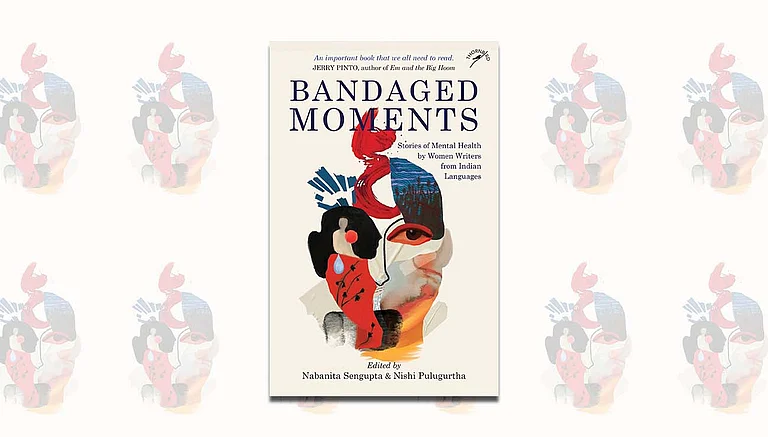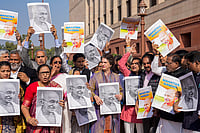
Bergman’s films revolve around characters battling deep existential conflicts, often expressed through introspective dialogues about death, isolation, and spiritual longing.
His female characters frequently endure emotional self-punishment, portrayed as unravelling under the weight of trauma, neglect, and unfulfilled desire.
While the films explore psychological pain in vivid detail, they rarely offer true resolution, leaving much of the suffering unaddressed or dismissed.
Existential miseries and conflicts are the pervasive monster that most of Bergman’s characters confront
A segment of Bergman’s Faith Trilogy, Through A Glass Darkly (1961). centres schizophrenic disruptions as a channel to access divinity.
In Face To Face (1976), originally conceived as a four-part, three-hour television film, Bergman locks onto suicide.
Encountering an Ingmar Bergman film is an intense, scalding experience. The elemental anguish embedded in his cinema is inseparable from faith and intimacy flowing via his powerfully expressive troupe of actors. His characters wrangle with, fret over death, the yearning for divine consolation, and the isolation of their choices and lives.
Existential miseries and conflicts are the pervasive monster most of them confront in long, introspective exchanges. It crosses into questions of mortality, whether people can bear the weight of their innermost shame, guilt and desire. The sick body, a proximity to death, reflects through several films: The Silence (1963), Cries and Whispers (1972), Autumn
Sonata (1978). Each of them trembles under a deep, insistent nihilistic force. While Persona (1966) is hailed most for its psychic blurring and twisting ambivalent identity, Bergman sought to disassemble throughout his career the lines between the real and imagined. Women in his films lash about, both oblivious and in clear comprehension of their mental vacillations, yet they are struck down by his granting final prerogative to the whims and regrets of others.
Edged To Isolation in Through A Glass Darkly & Hour of the Wolf
A segment of Bergman’s Faith Trilogy, Through A Glass Darkly (1961), centres schizophrenic disruptions as a channel to access divinity. Karin (Harriet Andersson) is “unusually well” after a stay at the hospital, where she’d been administered electro-shock therapy. She retreats with her husband Martin (Max von Sydow), her father David and her younger brother Minus for a nice, cosy holiday at their summer home on a remote island. The chamber drama sticks to these four characters.
Karin has long been emotionally abandoned by her father, who buried himself in his writing work. David was never around to address her needs. She felt unseen, ignored, unacknowledged. Hence, Bergman builds her a secret, parallel world—one within her mind where she escapes, looking for belonging and affirmation.
Karin insists she can hear strange, disembodied voices. She drifts into an empty room in the house. It’s an invitation she cannot swat away. She says they’re calling her from behind the wallpaper. A chorus of whispers dominates the sound design. She listens keenly, placing herself against the wall, as if seeking a sublime secret. In the film’s central scene, she gets lost in a reverie, transcending the mundane. A long shot registers her unravelling. They are waiting for God to reveal himself, she claims.
Karin isn’t wildly dissociated from her schizophrenic episodes. She has flickering ideas that she does experience them. At one point, she somewhat regrets being able to comprehend her confusion. She urges her husband to leave her, pleading that he won’t find happiness in a marriage with her. The trouble with Bergman’s heroines is the self-flagellation he forces on them. He views Karin’s agency as one solely mediated by tapping schizophrenia. In the imagined world, she edges towards peace, the love she didn’t get from her father. The quest for God becomes a way to fill the void. But Bergman makes a hinted reconciliation between the father and daughter arrive too late. Instead, Karin’s despair rings the film’s final notes.
Even in a similarly island-set Hour of the Wolf (1968), it’s the painter husband, Johan (Max von Sydow), who starts out as insomnia-stricken and prone to nightmarish visions, but eventually his wife, Alma (Liv Ullmann), ends up scarred by intimate influence. In attempting to pull him away from madness, Alma is ripped apart. He is assailed by anxiety and paranoia, detailing “flesh eaters”, uncanny creatures nagging him. Hour of the Wolf treats Johan’s mental instability with a visual dash of gothic horror.
All Alma’s purpose is to be compassionate to her spiralling husband. She wants to be physically one with him, despite his abuse. Like many of the men in Bergman’s films, Johan is resigned and broken. Women exert all their will, the strength of their love, to nourish men. Bergman tiringly believes women must carry this burden. So, Alma gets consumed by Johan’s illness. Bergman imagines her as the hapless victim who does all that she can to keep her marriage afloat. She cedes her individuality utterly, gladly.
The Limits of Mental Breakdowns in Face to Face
In Face To Face (1976), originally conceived as a four-part, three-hour television film, Bergman locks onto suicide. He puts his longtime muse, Liv Ullmann, through masochistic fantasies and nightmares linked to mental spirals. Both Bergman and Ullmann garnered Oscar nominations. However, the film, which was trimmed down to play at Cannes out of competition, is largely omitted from critical writings on the director. Even excluded from the Criterion box-set released in 2018 on Bergman’s birth centenary, it’s become widely available only recently. In his memoir, The Magic Lantern, he confesses being so struck by the psychotherapist Arthur Janov’s book The Primal Scream that he felt inspired to devise his own rendition of it. Janov’s book stressed re-enacting, calling up repressed childhood trauma to fully overcome it.
Jenny (Ullmann), a psychiatrist, barely escapes attempted rape while trying to ensure her patient’s safety. The episode sends rolling a cycle of collapse in Jenny’s mind. But it’s a more primal lack of maternal love, ranging back to her childhood, that haunts the way she splinters. Jenny laments being called frigid by others, but she stops short of calling it for what it is: an echo of the people she was raised by. Her colleague is disillusioned about psychiatry, the aid it can offer. He calls psychoanalysis “brutal” and “bankrupt”, whereas she’s more hopeful.
However, Face to Face predicates Jenny’s escalated strife almost entirely on the rape episode. Once again, a male director bases an act of sexual violence as the conduit of a woman’s supposed transformation. But the film retains a skewed understanding of Jenny. Who is she outside the brunt of violence? Her anguish turns full-blown after the incident. Bergman does project to expand on her accretion of trauma. There are vast reserves of grief she has endured. Jenny didn’t give herself the due space and kindness to work through her hidden pain. Neither does Bergman reflect tenderness on her.
Countless times throughout Face to Face, Jenny flings herself about the room. In the second part, she recounts the assault, shifting between astonishment at the desire she felt for the attacker and ironic laughter. The television film becomes a display of hysterics mounted with tireless energy by Ullmann. She throws herself to the edge of sanity, deluded imaginings and heightened paranoia. Her eyes glaze over with fatigue. She reminds herself to take one day at a time—“a bite, a walk, a nice book”—before she can no longer take it.
When Jenny does erupt, no one is quite able to deal with the surge of her anxiety. The sole witness she has—a potential lover, Tomas—can only listen. He’s aghast, awed by her convulsions. Bergman and his regular DP Sven Nykvist position Jenny as a figure inspiring aversion and horror. The connotations tend to be more negative than affirming of Jenny’s exorcism of demons. We are less moved by her state than shaken and disturbed by her physical assertions. The coercive gestures in Bergman’s filmmaking prove more cruel to Jenny than they offer consideration and humanity. He pushes her into a corner, quite literally. She tries to overdose on sleeping pills, but Tomas gets her hospitalised before it’s too late.
Though Jenny is very much the protagonist, her agency is diminished. Like any Bergman character, she sets off on raving monologues. The strain of her profession also weighs heavy. Bergman gives her reams and reams of lines to drive an emotional identification. Despite a slew of hints sprayed previously, it’s only in the final episode that much of Jenny’s repressed pain finds articulation. At this point, she goes further back in her life to mine why she is “emotionally crippled”.
She rants in terror, dredging up a litany of a tortured childhood spent at her grandparents after her parents passed in a car crash. She talks of the intense scrutiny they raised her in. From the choice of dress to a larger sense of freedom, everything was regimented and assigned severe judgment. If she dared to stray, she’d be confined in the dark. Jenny enacts a string of regular moments from childhood. She slams herself against walls, beating her chest, curling into a ball and staving off invisible attackers.
The fact that she gets unhinged progressively over the four episodes anchors how we see her. Jenny’s trauma-dump monologues come off as removed from holistic characterisation. She has no social life except a friend’s party she attends. But she’s evasive there as well. Little separates her from a reductive, joyless gaze. Jenny talks being “sealed up”, apathetic. “A prison grew around me”, she adds, admitting “a vast dread” within. Even her teenage daughter spurns her, mildly curious only if she’d try ending her life again. Jenny is met with indifference, most concerningly by the filmmaker’s framing gaze itself.
Face to Face is Bergman’s most psychologically overt expression. But there’s none of the formal, technical ruptures, the inherent mystery of human behaviour that Persona illuminates. The film is too blunt with its symbolisms and literal in frequent dream sequences. Jenny, draped in red, wanders the dank house, clashing both with her dead parents and grandparents. She seeks answers and apologies. But they are cold, detached. In a later sequence, she dreams of setting herself on fire. In her waking state, Jenny hallucinates about the ghost of her living grandmother peeking at her from corners.
Never does she ever rake up the question of lifelong scars with her grandparents. Instead of alienating her furthermore, they are poised as idols, figures to emulate and aspire for. The final scene is all about her being profoundly moved by the love they have for each other, its “dignity and humility” weathering mortality. Bergman pivots from a persistently harsh tone to parting grace notes that don’t sit well schematically. Face to Face builds on Jenny’s mental turmoil only to deflect, seek a certain closure from the very people who’d crushed her self-image. All the pain that’s summoned and recalled in explicit detail is brushed aside. Idealising the old grandparents, their conviction in love gain primacy. Jenny retrieving peace seems almost arbitrary. Despite Jenny’s slippery mental equilibrium being the plank of the film, Bergman sidelines her recovery.






























